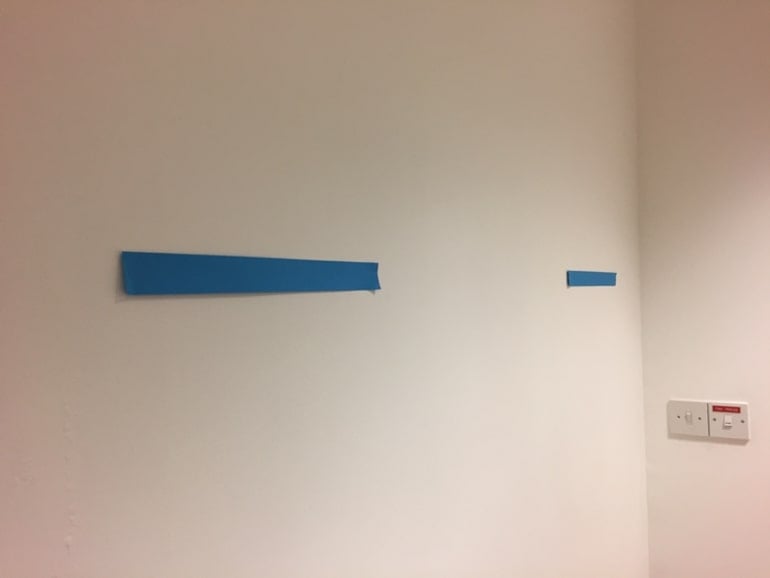Summary: Study reveals individual differences in how we perceive and imagine visual images we have seen.
Source: University of Plymouth
We are all used to seeing the 3D world that we live in reduced to 2D, whether in art, photography, or film.
But, when we close our eyes, how do we visualise things that we have already seen?
A new study led by the Universities or Plymouth and Essex investigated this question, discovering that many adults are resistant to imagining their own vision as if it were a flat image – seeing it in its fully processed, knowledge-laden form instead.
The results came as the researchers showed 58 adults two lines on a wall, both of which were the same length but one was closer to the participant and hence appeared visually longer.
Despite the instruction to base their judgements on appearance specifically (ie the closer line should be longer) approximately half of the participants judged the lines to appear the same. When they took a photo of the lines and were asked how long they appeared in the image their responses shifted; now the closer line appeared longer. However, when they were asked again about their own view they reverted to their original response.

This suggests that even when participants are made explicitly aware of what a 2D image of their vision might look like they treated actual sensory input differently – with considerable resistance to seeing what are called our “proximal representations” of vision (how things appear before our brains have had a chance to correct for things like relative size and distance).
Lead author Dr Steven Samuel, a Lecturer in Psychology at the University of Plymouth, said: “It’s complex and exciting to uncover how each of us sees and visualises different things – and the fact that half of our study population did not think in 2D was a very interesting finding.
“The next question to ask is why did these people think in that way? Is it that they could not think in 2D, or that they chose not to? We do not know for certain, but one explanation is that people are resistant to the principle that vision can be equated to a flat image – with ‘corrected’ vision the only type of vision they could reasonably conceive of. This implies that adults are disinclined to entertain vision in as a proximal image, even when the context is favourable to such behaviour. However, it does not mean that they are necessarily unable to do so.”
About this visual neuroscience research news
Author: Amy McSweeny
Source: University of Plymouth
Contact: Amy McSweeny – University of Plymouth
Image: The image is credited to Steven Samuel University of Plymouth
Original Research: Open access.
“‘Seeing’ proximal representations: Testing attitudes to the relationship between vision and images” by Steven Samuel et al. PLOS ONE
Abstract
‘Seeing’ proximal representations: Testing attitudes to the relationship between vision and images
Corrections applied by the visual system, like size constancy, provide us with a coherent and stable perspective from ever-changing retinal images. In the present experiment we investigated how willing adults are to examine their own vision as if it were an uncorrected 2D image, much like a photograph.
We showed adult participants two lines on a wall, both of which were the same length but one was closer to the participant and hence appeared visually longer. Despite the instruction to base their judgements on appearance specifically, approximately half of the participants judged the lines to appear the same.
When they took a photo of the lines and were asked how long they appeared in the image their responses shifted; now the closer line appeared longer. However, when they were asked again about their own view they reverted to their original response.
These results suggest that many adults are resistant to imagining their own vision as if it were a flat image. We also place these results within the context of recent views on visual perspective-taking.







